Study on the Dynamic Characteristics of the Gear Lubrication Flow Field with Baffles and Optimization Design Strategies
Abstract
:1. Introduction
2. High-Speed Gear Lubricating Oil Field Mathematical Analysis Model
2.1. Mathematical Model of Gear Lubrication Based on LBM
2.2. LBM–LES Coupling Model
2.3. Gear Lubrication Solving Process Based on LBM–LES Coupling
3. Numerical Model of High-Speed Gear Lubricating Oil
3.1. Geometric Model
3.2. Initial Conditions and Boundary Conditions
3.3. Lattice Independence Verification
4. Numerical Simulation and Discussion of High-Speed Gear Lubrication Oil Field
Distribution Pattern of Lubrication Oil in High-Speed Gearbox
5. Conclusions
- (1)
- Based on the LBM–LES coupled model, a modeling and heat transfer dynamics framework for high-speed gear lubrication flow fields was established. The flow field distribution mechanisms during the gear rotation process were investigated in detail. By analyzing the dynamic evolution of the gear lubrication process under the presence of baffles in the gearbox, this study examined the dynamic variations in key parameters. These include turbulent kinetic energy, velocity, and pressure drop under different flow velocities and mixer configurations. The results provide a solid theoretical foundation for subsequent optimization designs.
- (2)
- The rotational speed of gears is one of the key factors influencing their lubrication performance. This study found that, as the gear speed increased beyond a critical threshold, the turbulence intensity tended to stabilize. The vorticity also stabilized at this point. This phenomenon can be attributed to the optimized baffle design. The design skillfully guides and constrains fluid flow, creating a relatively stable flow region within the baffle. As a result, the lubrication performance is effectively enhanced, ensuring the efficient and stable operation of the gear transmission system.
- (3)
- Enhancing the oil level is crucial for improving the lubrication performance of gears and bearings. The results indicate that when the radial speed of the gears reaches 8 m/s, a stable oil film can form on the gear surface. Moreover, an appropriate increase in the oil level helps to more evenly cover the gear surface with oil. This further enhances lubrication performance, reduces wear risks, and extends equipment lifespan.
- (4)
- The axial gap and through-hole diameter of the baffle have a significant impact on fluid enthalpy, energy transfer, and thermodynamic performance. A larger axial gap and perforation diameter are beneficial for increasing fluid enthalpy. This, in turn, optimizes energy transfer and thermodynamic performance. However, when the gap becomes too large, the enhancement in performance gradually diminishes. There is an optimal value beyond which further increases in gap size are less effective. In terms of vorticity, smaller axial gaps and perforations increase fluid resistance, promoting energy dissipation. This leads to lower stable values of vorticity. By optimizing the baffle design, the flow and energy dissipation characteristics of the fluid within the gearbox can be controlled. This improves thermal management and lubrication performance, providing strong support for the efficient, stable, and long-term operation of the gear transmission system.
Author Contributions
Funding
Data Availability Statement
Conflicts of Interest
References
- Liu, Y.; Shao, S.; Zhang, K.; Yao, Y.; Wang, X. Investigation of characteristics of splash lubrication and churning power loss in gear-boxes with a guide plate. Tribol. Int. 2024, 198, 109875. [Google Scholar] [CrossRef]
- Shore, J.F.; Kolekar, A.S.; Ren, N.; Kadiric, A. An Investigation Into the Influence of Viscosity on Gear Churning Losses by Considering the Effective Immersion Depth. Tribol. Trans. 2023, 66, 906–919. [Google Scholar] [CrossRef]
- LePrince, G.; Changenet, C.; Ville, F.; Velex, P.; Dufau, C.; Jarnias, F. Influence of aerated lubricants on gear churning losses–an engineering model. Tribol. Trans. 2011, 54, 929–938. [Google Scholar] [CrossRef]
- Concli, F.; Gorla, C.; Della Torre AMontenegro, G. Experimental investigations to use splash lubrication for high-speed gears. J. Tribol. 2017, 139, 061104. [Google Scholar]
- Xu, W.X.; Xu, P.; Yang, Y.; Tan, D.P.; Li, L. The utilization and advancement of laser ultrasound testing in the assessment of aerospace composite characteristics: A review. Chin. J. Aeronaut. 2025; in press. [Google Scholar]
- Li, Q.H.; Xu, P.; Li, L.; Xu, W.X.; Tan, D.P. Investigation on the Lubrication Heat Transfer Mechanism of the Multilevel Gearbox by the Lattice Boltzmann Method. Processes 2024, 12, 381. [Google Scholar] [CrossRef]
- Wu, J.F.; Xu, P.; Li, L.; Li, Z.; Qi, H.; Wang, C.Y.; Zhang, Y.K.; Xie, Y.S.; Tan, D.P. Multiphase dynamic interfaces and abrasive transport dynamics for abrasive flow machining in shear thickening transition states. Powder Technol. 2024, 446, 120150. [Google Scholar] [CrossRef]
- Lin, H.; Ma, M.; Qi, H.; Wang, X.; Xing, Z.; Alowasheeir, A.; Tang, H.; Chan Jun, S.; Yamauchi, Y.; Liu, S. 3D-Printed photocatalysts for revo-lutionizing catalytic conversion of solar to chemical energy. Prog. Mater. Sci. 2025, 151, 101427. [Google Scholar] [CrossRef]
- Lin, H.; Shen, Q.; Ma, M.; Ji, R.; Guo, H.; Qi, H.; Xing, W.; Tang, H. 3D Printing of Porous Ceramics for Enhanced Thermal Insulation Properties. Adv. Sci. 2024, 12, 2412554. [Google Scholar]
- Terekhov, A.S. Hydraulic losses in gearboxes with oil immersion. Russ. Eng. J. 1975, 55, 7–11. [Google Scholar]
- Guo, X.M.; Yang, M.Y.; Li, F.Q.; Zhu, Z.C.; Cui, B.L. Investigation on Cryogenic Cavitation Characteristics of an Inducer Considering Thermodynamic Effects. Energies 2024, 17, 3627. [Google Scholar] [CrossRef]
- Li, L.; Xu, P.; Li, Q.H.; Yin, Z.C.; Zheng, R.Y.; Wu, J.F.; Bao, J.J.; Qi, H.; Tan, D.P. Multi-field coupling particle flow dynamic behaviors of the microreactor and ultrasonic control method. Powder Technol. 2025, 454, 120731. [Google Scholar] [CrossRef]
- Ge, J.Q.; Lin, Y.H.; Qi, H.; Li, Y.T.; Li, X.L.; Li, C.; Li, Z.A.; Xu, K.Q. The impact of ultrasonic-induced jet morphology on polishing efficiency. Int. J. Mech. Sci. 2024, 284, 109764. [Google Scholar] [CrossRef]
- Lin, Q.; Li, Q.H.; Xu, P.; Zheng, R.Y.; Bao, J.J.; Li, L.; Tan, D.P. Transport mechanism and optimization design of the LBM-LES coupling-based two-phase flow in static mixers. J. Mar. Sci. Eng. 2025; in press. [Google Scholar]
- Mastrone, M.N.; Hartono, E.A.; Chernoray, V.; Concli, F. Oil distribution and churning losses of gearboxes: Experimental and numerical analysis. Tribol. Int. 2020, 151, 106496. [Google Scholar] [CrossRef]
- Xu, P.; Li, Q.H.; Wang, C.Y.; Li, L.; Tan, D.P.; Wu, H.P. Interlayer healing mechanism of multipath deposition 3D printing models and interlayer strength regulation method. J. Manuf. Process. 2025; in press. [Google Scholar] [CrossRef]
- Changenet, C.; Philippe, V. A model for the prediction of churning losses in geared transmissions—Preliminary results. J. Mech. Des. 2007, 129, 128–133. [Google Scholar] [CrossRef]
- Tan, Y.F.; Ni, Y.S.; Wu, J.F.; Li, L.; Tan, D.P. Machinability evolution of gas–liquid-solid three-phase rotary abrasive flow finishing. Int. J. Adv. Manuf. Technol. 2023, 131, 2145–2164. [Google Scholar] [CrossRef]
- Wang, X.; Zhu, B.; Yao, M.Y. Analysis of the optimal lubricating oil amount for electric vehicle decelerators based on the moving particle semi-implicit method (MPS). Mech. Transm. 2020, 44, 112–120. [Google Scholar]
- Liu, H.; Jurkschat, T.; Lohner, T. Detailed investigations on the oil flow in dip-lubricated gearboxes by the finite volume CFD method. Lubricants 2018, 6, 47. [Google Scholar] [CrossRef]
- Dai, Y.; Ma, F.; Zhu, X. Development of an analytical model to estimate the churningpower losses of a spiral bevel gear. Tribol. Int. 2020, 151, 106536. [Google Scholar] [CrossRef]
- Hu, X.; Li, P.; Wu, M. Influence of the dynamic motion of a splash lubricated gearbox on churning power losses. Energies 2019, 12, 3225. [Google Scholar] [CrossRef]
- Hill, M.J.; Kunz, R.F.; Medvitz, R.B.; Handschuh, R.F.; Long, L.N.; Noack, R.W.; Morris, P.J. CFD Analysis of gear windage losses: Validation and parametric aerody-namic studies. J. Fluids Eng. 2011, v133, 33–45. [Google Scholar]
- Hildebrand, L.; Dangl, F.; Sedlmair, M.; Lohner, T.; Stahl, K. CFD analysis on the oil flow of a gear stage with guide plate. Forsch. Im Inge-Nieurwesen 2022, 86, 395–408. [Google Scholar]
- Boness, R.J. Churning losses of discs and gears running partially submerged in oil. In Proceedings of the ASME International Power Transmission and Gearing Conference, Chicago, IL, USA, 25–28 April 1989. [Google Scholar]
- Wang, T.; Tan, D.P.; Hou, Y.Q.; Wang, C.Y.; Cheng, J.W.; Song, W.L. Analytical and experimental investigation of vibration response for the cracked fluid-filled thin cylindrical shell under transport condition. Appl. Math. Model. 2025, 142, 115969. [Google Scholar] [CrossRef]
- Ji, R.Q.; Shen, Q.T.; Zhang, L.; Zeng, X.; Qi, H. Novel photocatalysis-assisted mechanical polishing of laser cladding cobalt-based alloy using TiO2 nanoparticles. Powder Technol. 2024, 444, 119990. [Google Scholar]
- Shao, S.; Zhang, K.; Yao, Y.; Liu, Y.; Yang, J.; Xin, Z.; He, K. A Study on the Lubrication Characteristics and Parameter Influence of a High-Speed Train Herringbone Gearbox. Lubricants 2024, 12, 270. [Google Scholar] [CrossRef]
- Li, L.; Xu, P.; Li, Q.H.; Zheng, R.Y.; Xu, X.M.; Wu, J.F.; He, B.Y.; Bao, J.J.; Tan, D.P. A coupled LBM-LES-DEM particle flow modeling for microfluidic chip and ultrasonic-based particle aggregation control method. Appl. Math. Model. 2025, 143, 116025. [Google Scholar]
- Reinecke, S.R.; Blahout, S.; Zhang, Z.; Rosemann, T.; Hussong, J.; Kruggel-Emden, H. Effects of particle size, particle density, and Reynolds number on equilibrium streaks forming in a square wave serpentine microchannel: A DEM-LBM simulation study including experimental validation of the numerical framework. Powder Technol. 2023, 427, 118688. [Google Scholar] [CrossRef]
- Li, C.; Zhao, Y.; Ai, D.; Wang, Q.; Peng, Z.; Li, Y. Multi-component LBM-LES model of the air and methane flow in tunnels and its validation. Phys. A Stat. Mech. Its Appl. 2020, 555, 124279. [Google Scholar]
- Qin, J.; Kolahdouz, E.M.; Griffith, B.E. An immersed interface-lattice Boltzmann method for fluid-structure interaction. J. Comput. Phys. 2021, 428, 109807. [Google Scholar]
- Liu, J.; Huang, C.; Chai, Z.; Shi, B. A diffuse-interface lattice Boltzmann method for fluid-particle interaction problems. Comput. Fluids 2022, 233, 105240. [Google Scholar]
- Xing, J.T. Theoretical investigations on lattice Boltzmann method: An amended MBD and improved LBM. Acta Mech. Sin. 2021, 37, 1659–1682. [Google Scholar]
- Han, M.; Kikumoto, H.; Ooka, R. Numerical investigation of lattice Boltzmann method-based large-eddy simulation in non-isothermal enclosed cavity airflow. Int. Commun. Heat Mass Transf. 2024, 157, 107698. [Google Scholar]
- Cui, X.; Wang, Z.; Yao, X.; Liu, M.; Yu, M. A coupled two-relaxation-time lattice Boltzmann-volume penalization method for flows past obstacles. Math. Comput. Simul. 2022, 198, 85–105. [Google Scholar]
- Guo, Z.; Zheng, C. Analysis of lattice Boltzmann equation for microscale gas flows: Relaxation times, boundary conditions and the Knudsen layer. Int. J. Comput. Fluid Dynam. 2008, 22, 465–473. [Google Scholar]
- Smagorinsky, J. General circulation experiments with the primitive equations: I. The basic experiment. Mon. Weather. Rev. 1963, 91, 99–164. [Google Scholar]
- Chen, H.; Liu, W.; Li, S. A fully-resolved LBM-LES-DEM numerical scheme for adhesive and cohesive particle-laden turbulent flows in three dimensions. Powder Technol. 2024, 440, 119800. [Google Scholar]
- Aniello, A.; Schuster, D.; Werner, P.; Boussuge, J.F.; Gatti, M.; Mirat, C.; Rude, U. Comparison of a finite volume and two Lattice Boltzmann solvers for swirled confined flows. Comput. Fluids 2022, 241, 105463. [Google Scholar]
- Li, Q.; Tang, R.; Wang, S.; Zou, Z. A coupled LES-LBM-IMB-DEM modeling for evaluating pressure drop of a heterogeneous alternating-layer packed bed. Chem. Eng. J. 2022, 433, 133529. [Google Scholar]
- Chen, H.; Liu, W.; Chen, Z.; Zheng, Z. A numerical study on the sedimentation of adhesive particles in viscous fluids using LBM-LES-DEM. Powder Technol. 2021, 391, 467–478. [Google Scholar]
- Uddin, M.H.; Coronella, C.J. Effects of grid size on predictions of bed expansion in bubbling fluidized beds of Geldart B particles: A generalized rule for a grid-independent solution of TFM simulations. Particuology 2017, 34, 61–69. [Google Scholar]
- Li, L.; Xu, P.; Xu, W.X.; Lu, B.; Wang, C.Y.; Tan, D.P. Multi-field coupling vibration patterns of the multiphase sink vortex and distortion recognition method. Mech. Syst. Signal Process. 2024, 219, 111624. [Google Scholar]
- De Luca, F.; Mancini, S.; Miranda, S.; Pensa, C. An extended verification and validation study of CFD simulations for planing hulls. J. Ship Res. 2016, 60, 101–118. [Google Scholar]
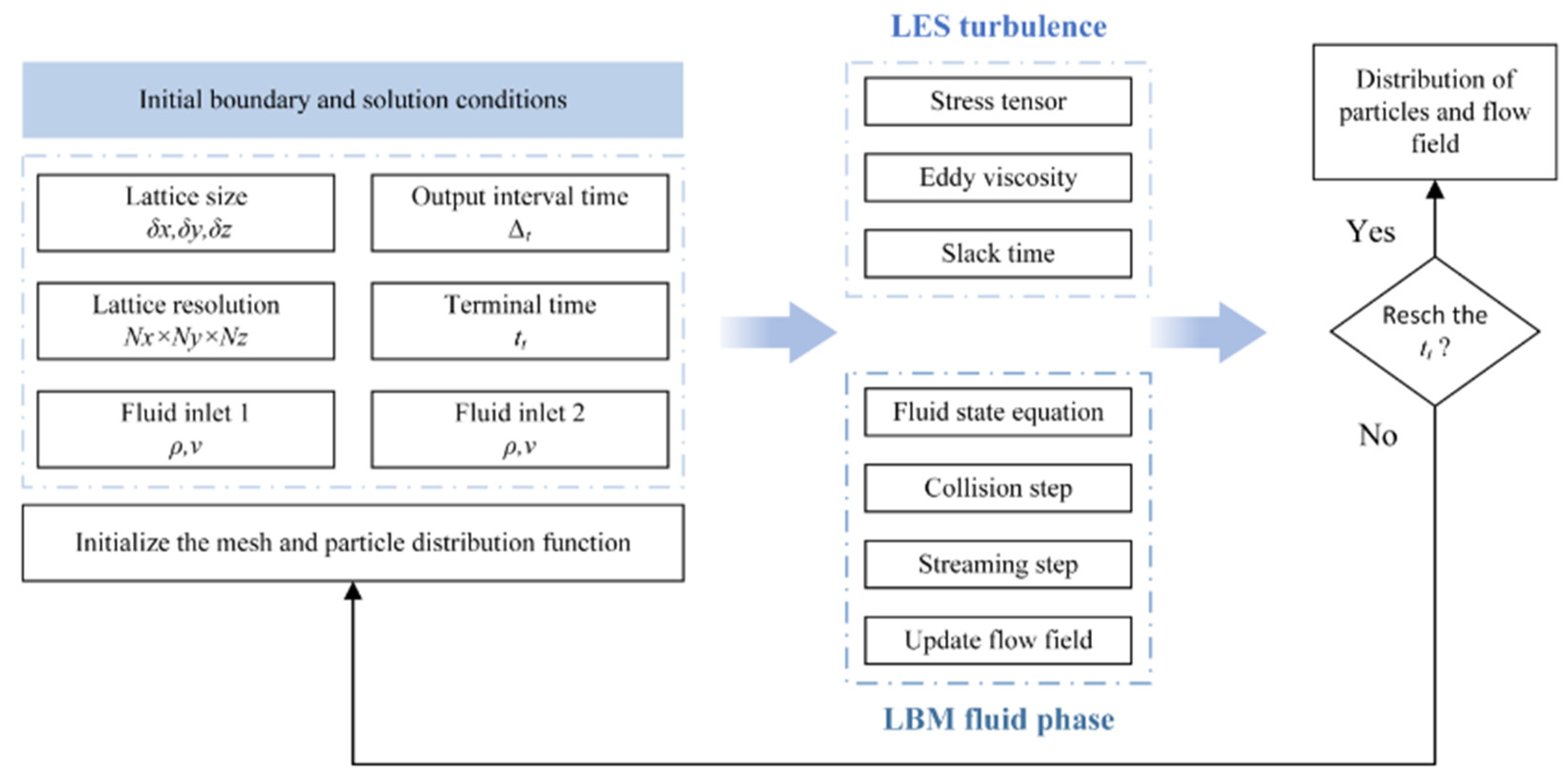
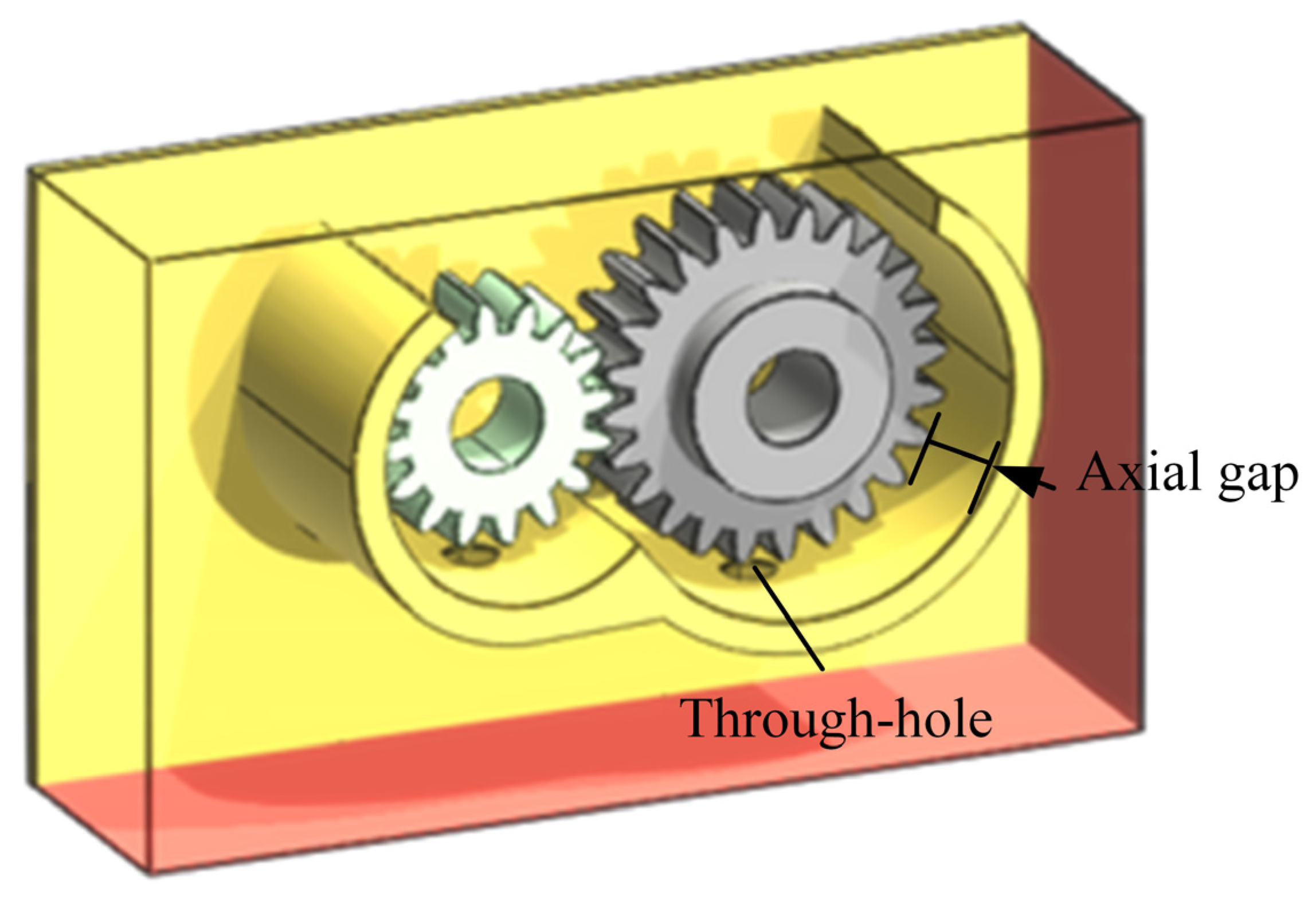
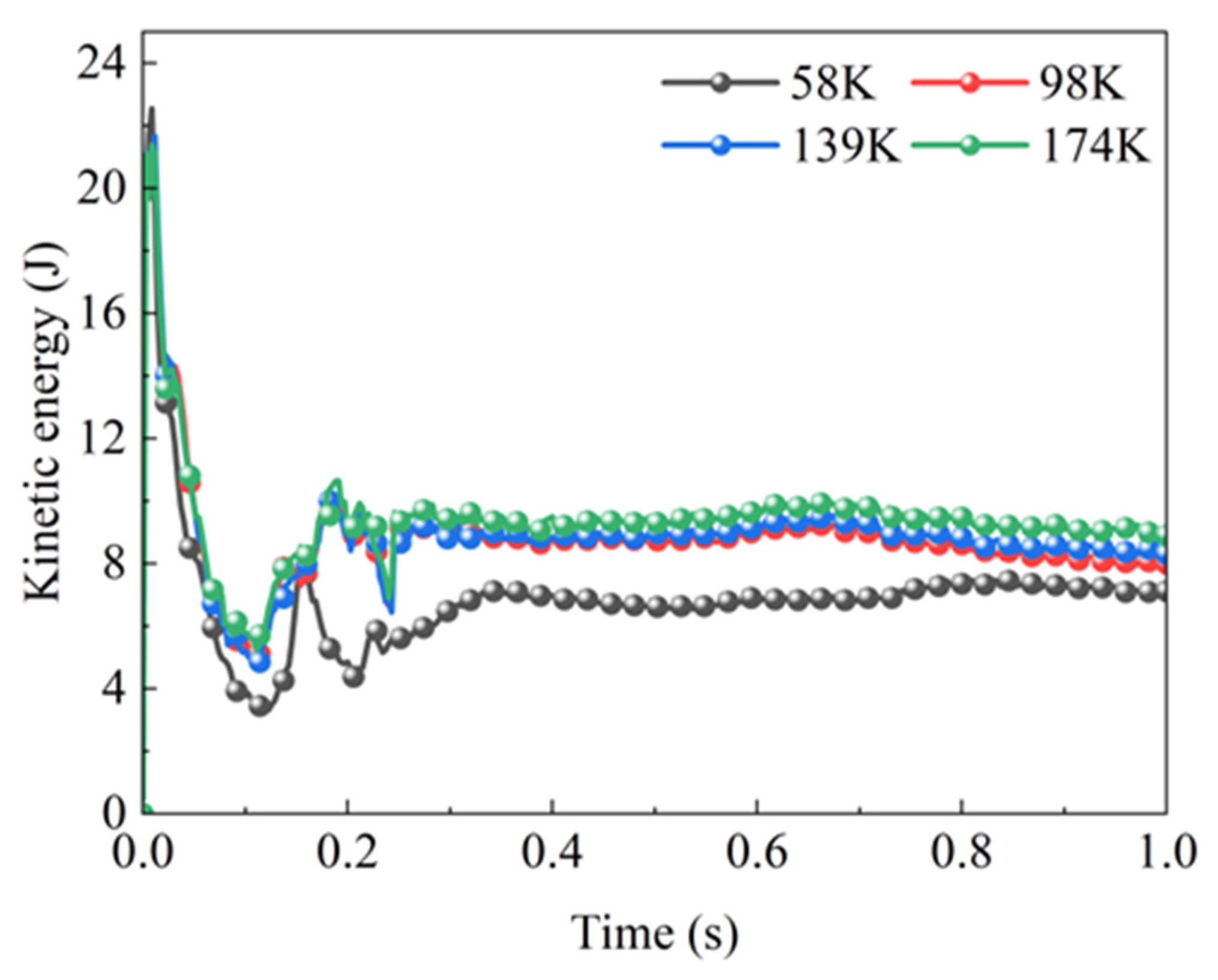
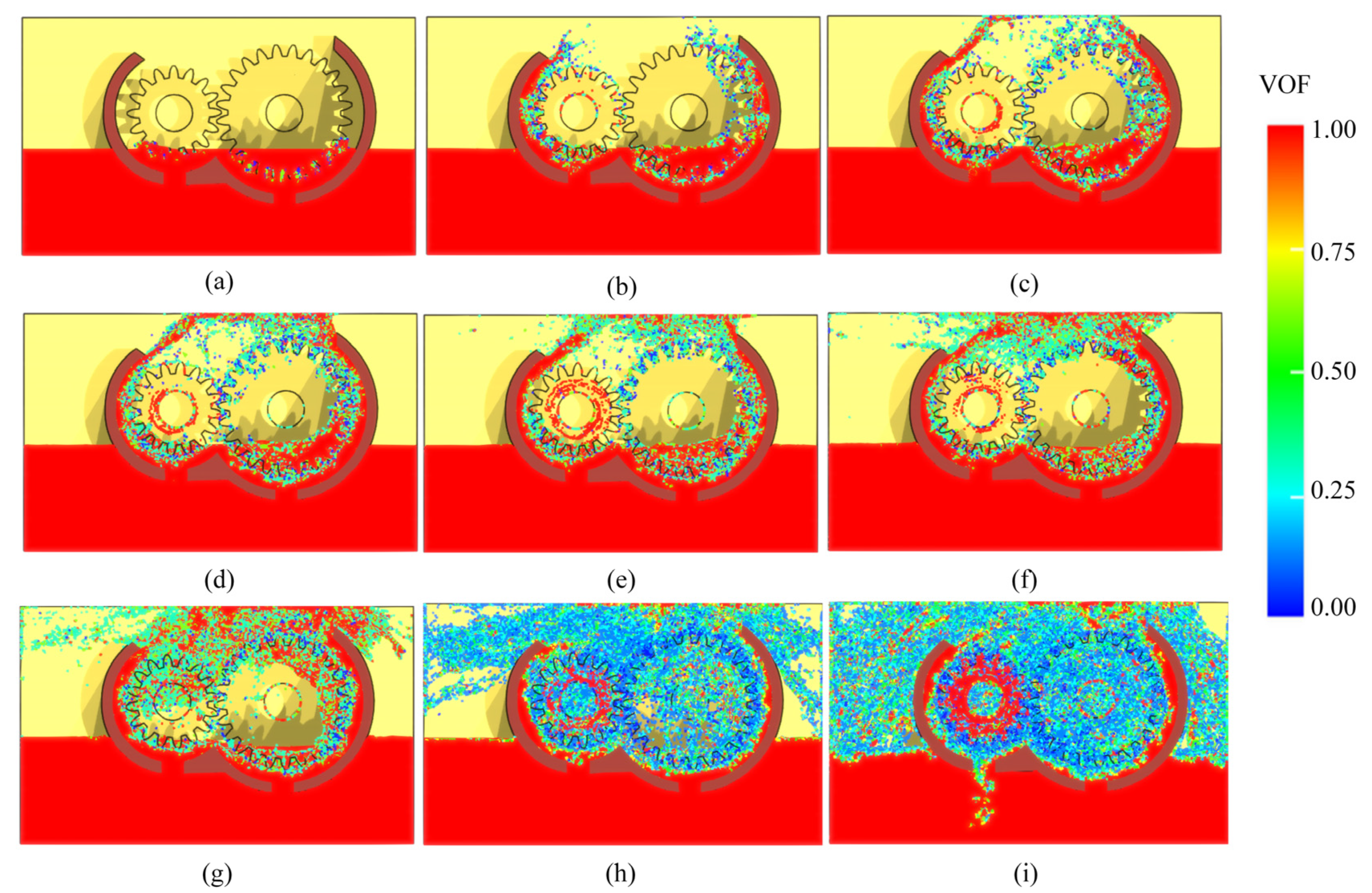
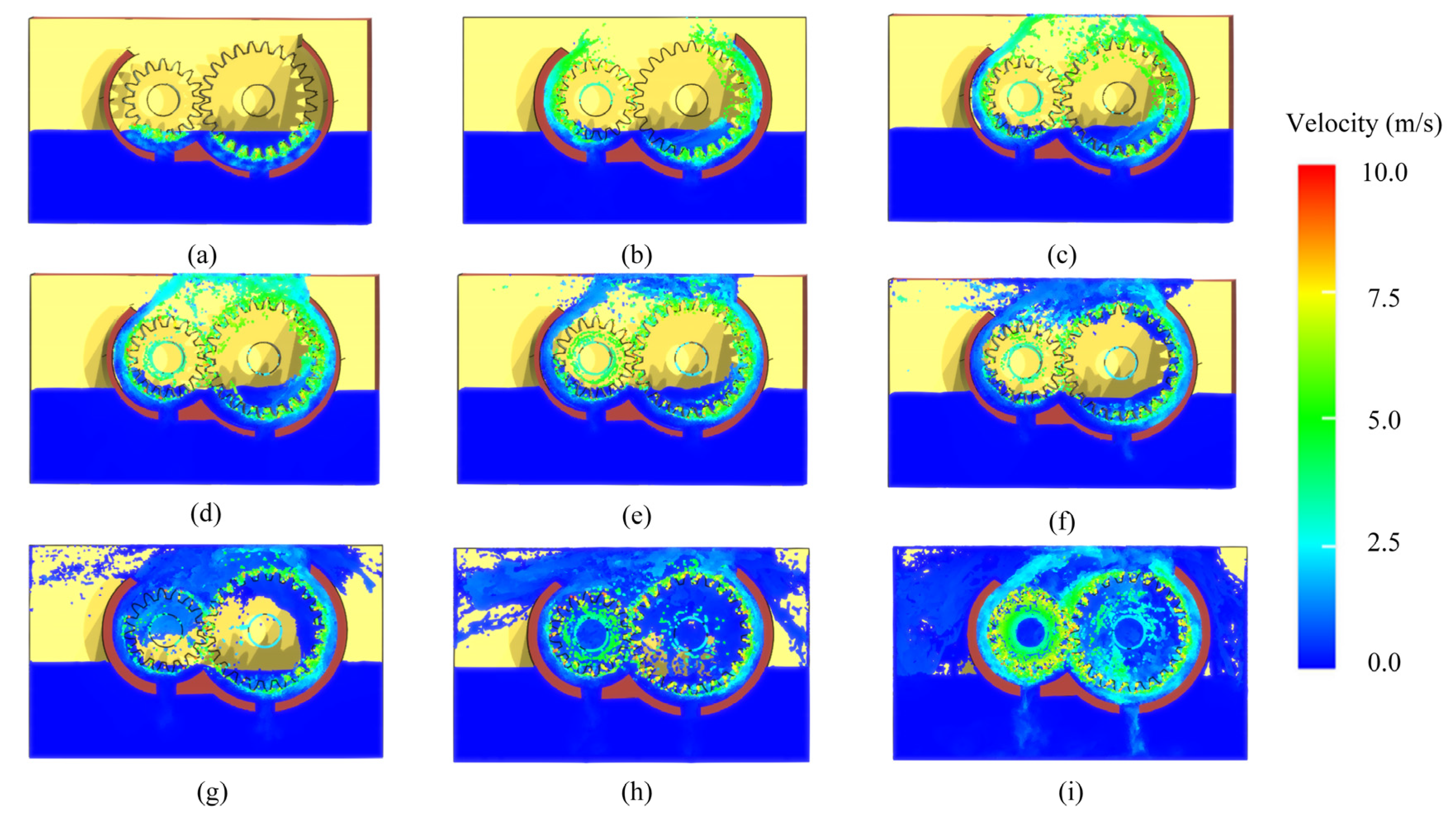

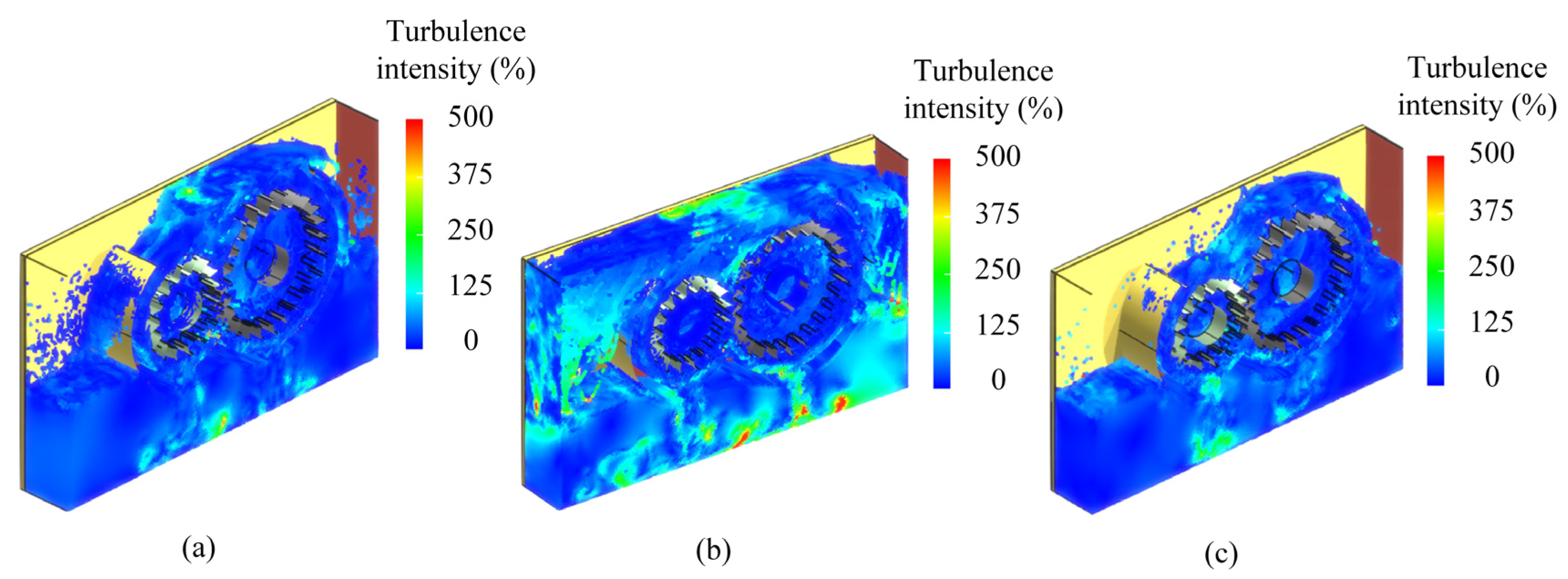

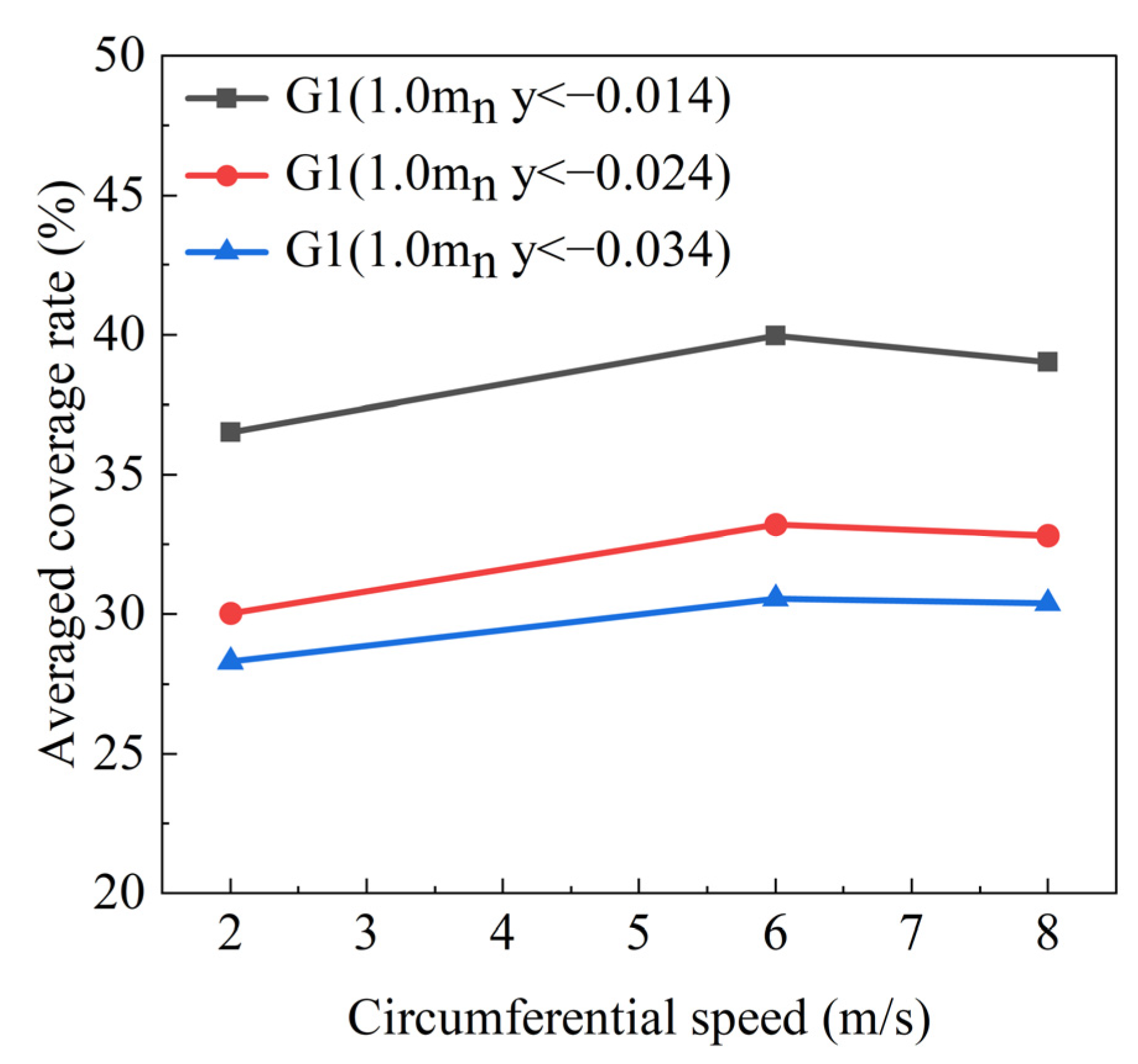
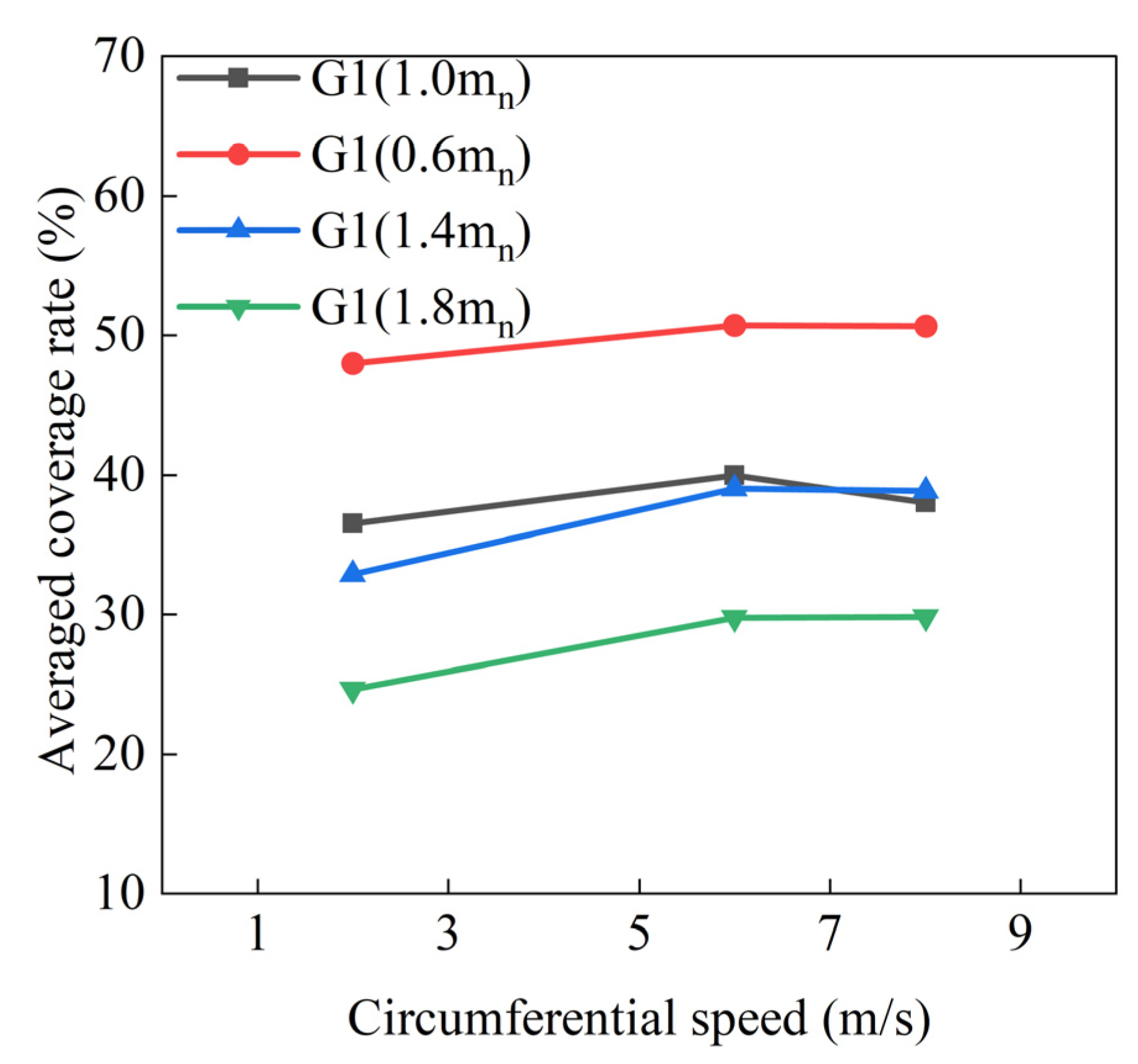
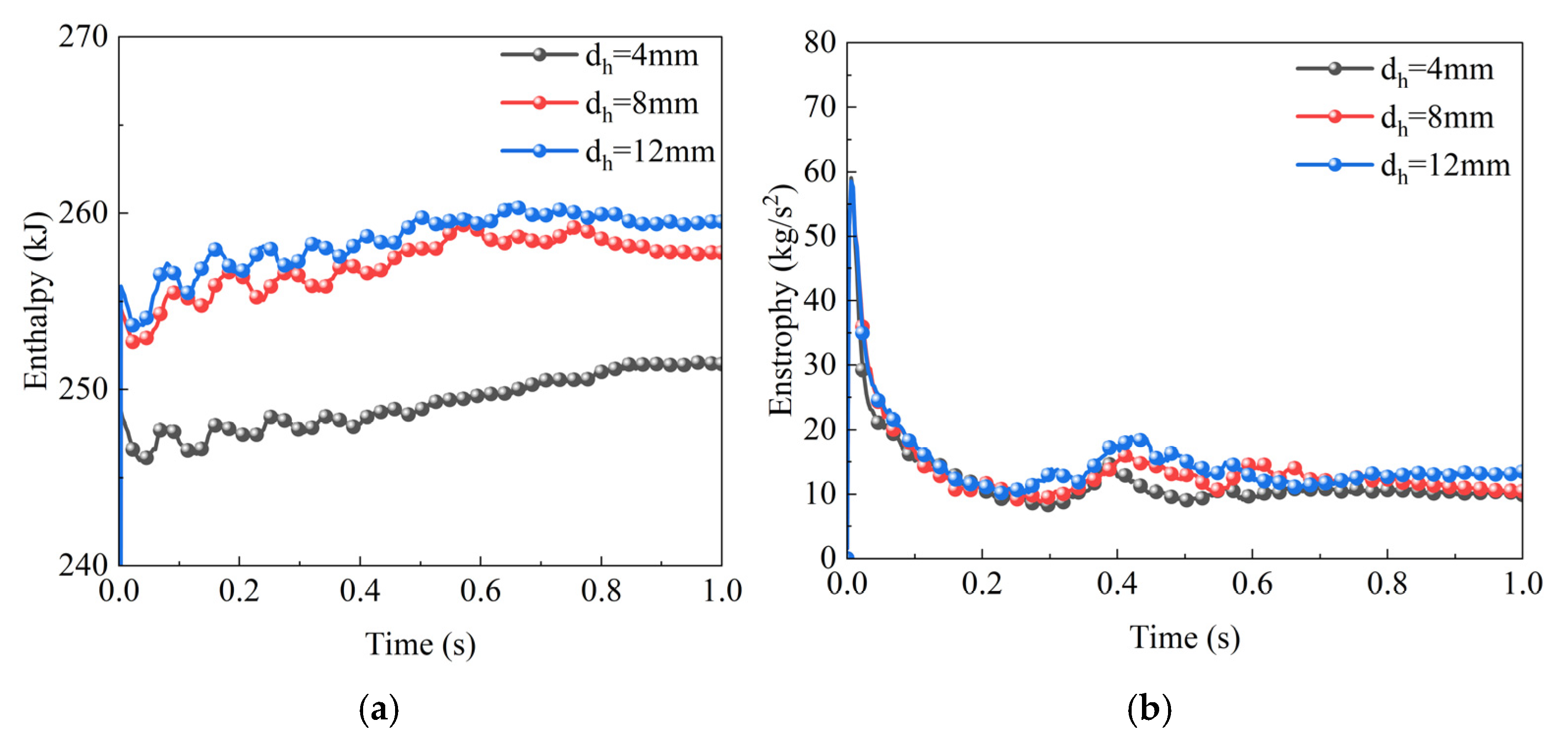
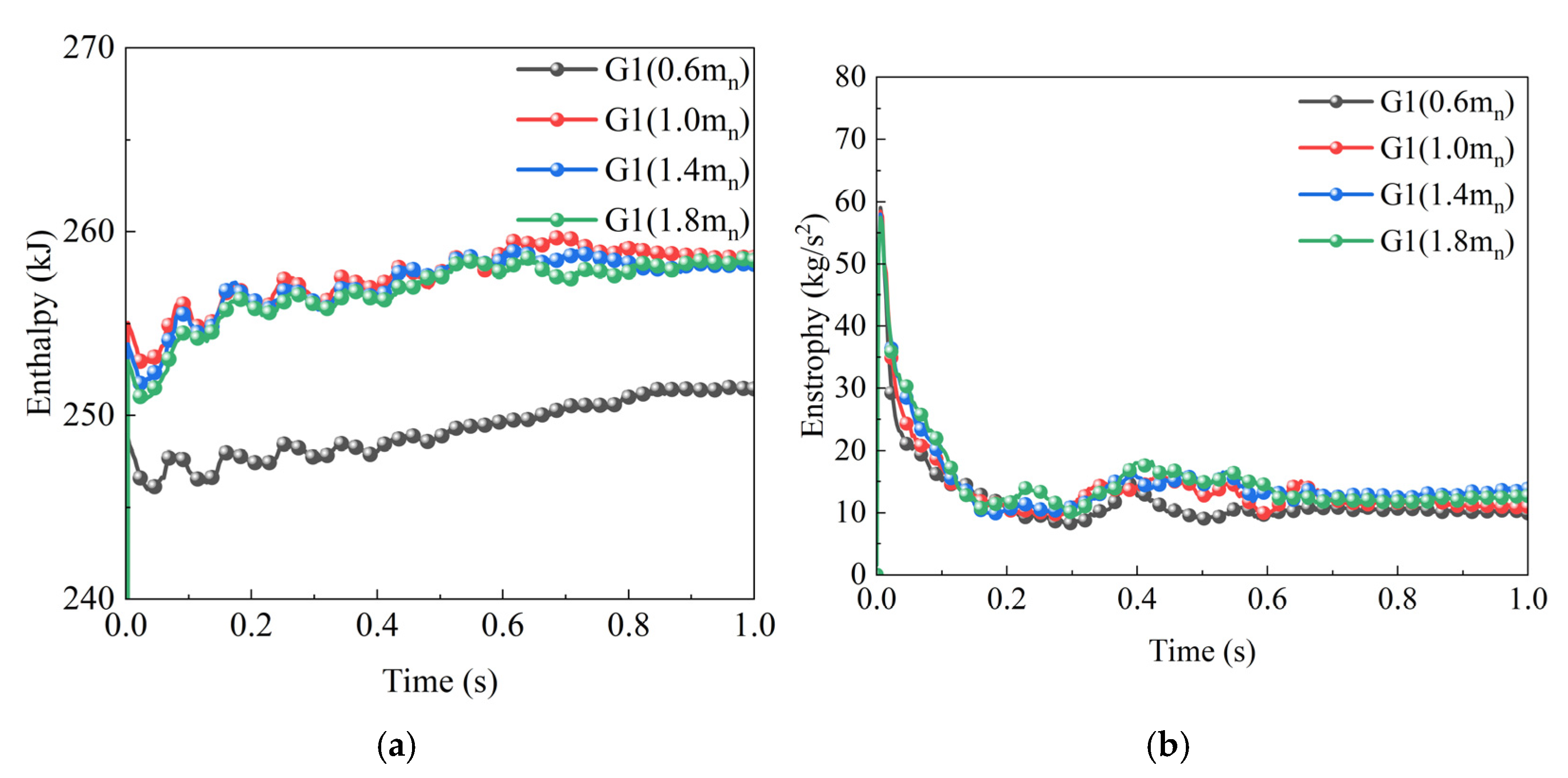
| Parameters | Value |
|---|---|
| Lubricating oil density (kg/m3) | 880 |
| Lubricating oil dynamic viscosity (Pa·s) | 0.06 |
| Lubricating oil height (mm) | 10, 20, 30 |
| Air density (kg/m3) | 1.225 |
| Air dynamic viscosity (Pa·s) | 1.7894 × 10−5 |
| Small gear rotation speed (r·min−1) | 1200, 3600, 4800 |
| Time step ∆t (s) | 2 × 10−5 |
Disclaimer/Publisher’s Note: The statements, opinions and data contained in all publications are solely those of the individual author(s) and contributor(s) and not of MDPI and/or the editor(s). MDPI and/or the editor(s) disclaim responsibility for any injury to people or property resulting from any ideas, methods, instructions or products referred to in the content. |
© 2025 by the authors. Licensee MDPI, Basel, Switzerland. This article is an open access article distributed under the terms and conditions of the Creative Commons Attribution (CC BY) license (https://creativecommons.org/licenses/by/4.0/).
Share and Cite
Gu, Y.; Li, L.; Zheng, G. Study on the Dynamic Characteristics of the Gear Lubrication Flow Field with Baffles and Optimization Design Strategies. Lubricants 2025, 13, 143. https://doi.org/10.3390/lubricants13040143
Gu Y, Li L, Zheng G. Study on the Dynamic Characteristics of the Gear Lubrication Flow Field with Baffles and Optimization Design Strategies. Lubricants. 2025; 13(4):143. https://doi.org/10.3390/lubricants13040143
Chicago/Turabian StyleGu, Yihong, Lin Li, and Gaoan Zheng. 2025. "Study on the Dynamic Characteristics of the Gear Lubrication Flow Field with Baffles and Optimization Design Strategies" Lubricants 13, no. 4: 143. https://doi.org/10.3390/lubricants13040143
APA StyleGu, Y., Li, L., & Zheng, G. (2025). Study on the Dynamic Characteristics of the Gear Lubrication Flow Field with Baffles and Optimization Design Strategies. Lubricants, 13(4), 143. https://doi.org/10.3390/lubricants13040143





